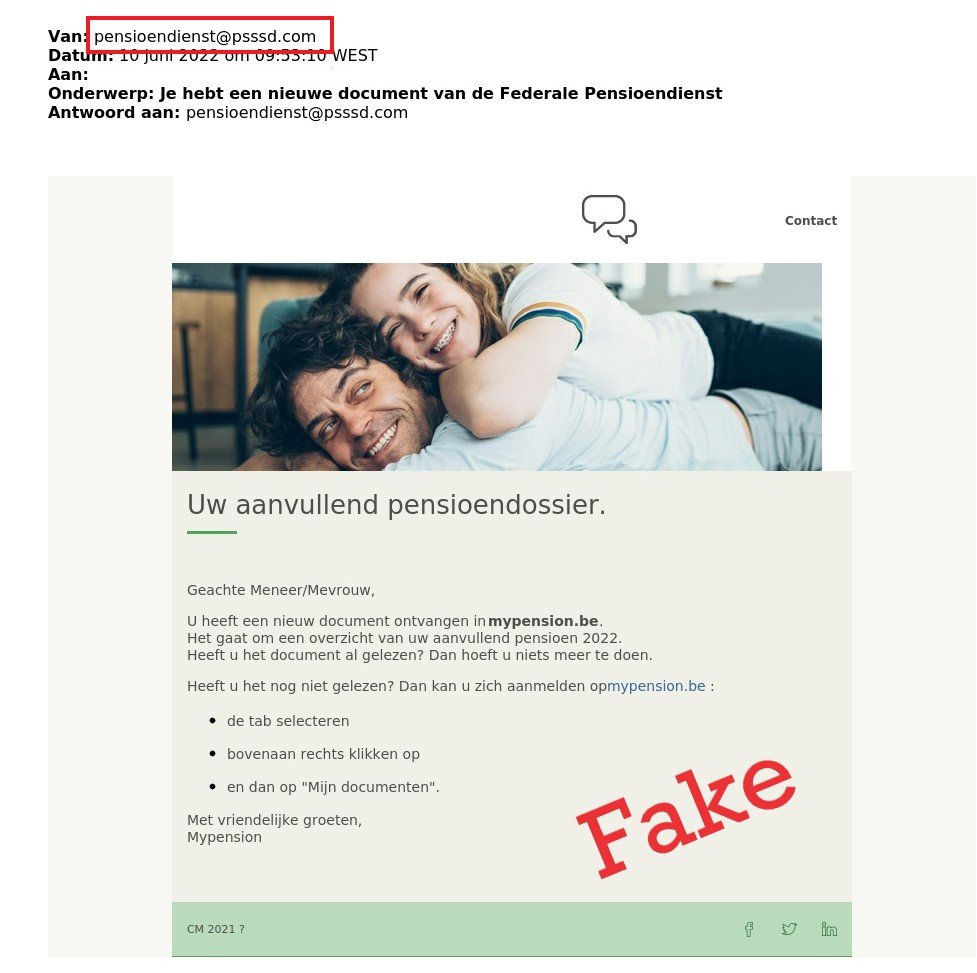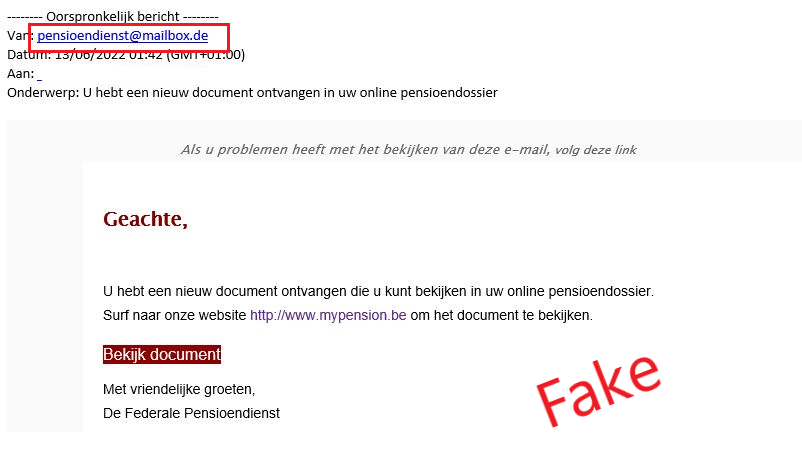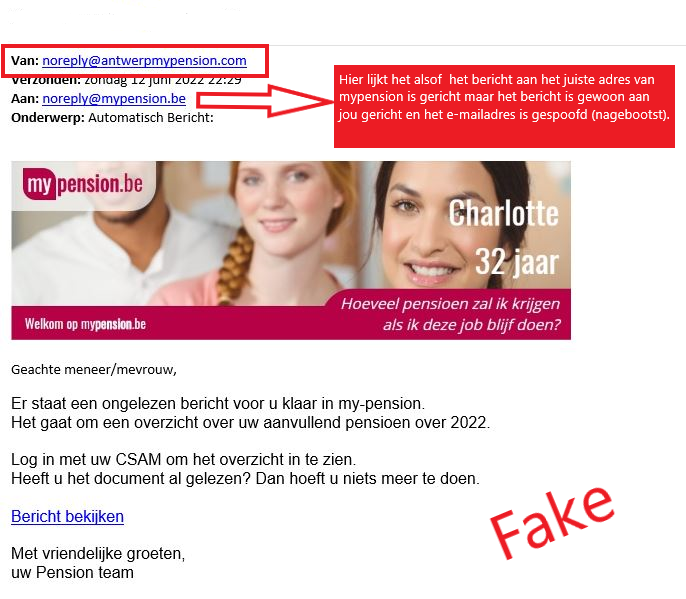Last week we received more than 5500 reports of fake messages that seem to come from the Federal Pensions Service. There are several versions of the fake message circulating, all trying to lead you to a fake website. You can quickly see that the message is not from the Federal Pension Service by looking at the e-mail address of the sender. Do not click on the link in the message.
The Federal Pension Service will not contact you by text message or e-mail but will always ask you to retrieve information via your online pension file at mypension.be and to log in with your eID, itsme or another secure key.
How can you recognise fake messages from the Pension Service? Read the overview on the website of the Federal Pension Service.
See below for some recent examples: (only messages in Dutch are circulating)



Don't fall into the trap!
Learn to identify fake e-mails.
Take the phishing test now and don’t be caught out ever again!
What to do?
- Do not click on a link in a suspicious message, do not open attachments and do not download applications if you are asked to.
- Suspicious emails can be forwarded to suspicious@safeonweb.be.
- Suspicious text messages can also be forwarded. Take a screenshot and send it to suspicious@safeonweb.be. The content is then processed automatically.
Did you click on a suspicious link?
- If you have clicked on the link, do not complete the fields and terminate any interaction.
- NEVER give out personal codes.
- If you have entered a password that you also use elsewhere, change it immediately.
Have you been scammed?
- If you have lost money or are being extorted, we recommend that you file a report with your local police straight away.
- Contact your bank and/or Card Stop on 078 170 170 (+32 78 170 170 from abroad) if you have passed on bank details, money is disappearing from your bank account or if you have transferred money to a scammer. In this way, any fraudulent transactions can be blocked.

